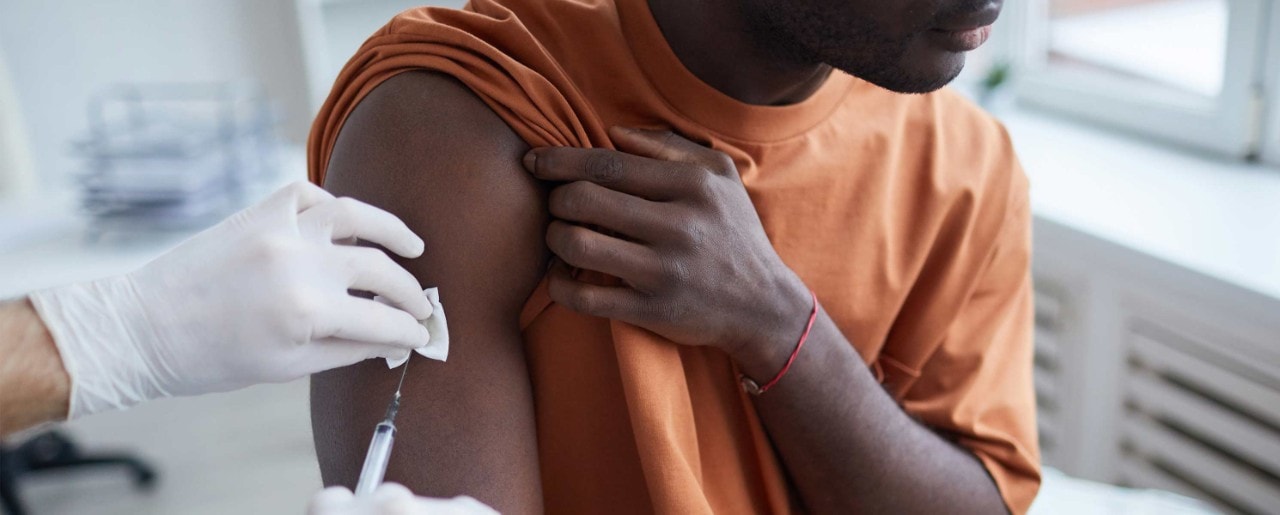Health
6 simple tips to combat needle anxiety in both children and adults
By Christina Varvatsis, PharmD, BCPS Nov 03, 2022 • 3 min
If you’re feeling uneasy about getting a shot, you’re not alone. As many as 2 in 3 children and 1 in 4 adults have a strong fear of needles. But with the winter fast approaching, it’s more important than ever to be up to date with your vaccines. Here are some helpful tips to make your appointment less stressful for both you and your child.
- Look away. This one may seem obvious, but if you’re anxious, you might be tempted to focus on everything that’s happening. Instead, keep your gaze away from the needle. Also, be sure to let the person administering your vaccine know about your fear and that you prefer not to see the shot.
- Master the art of distraction. Playing with a toy, reading a book or watching a funny video on your phone can be a great way to divert your attention. Visualization can also help distract and calm your mind. Simply think of a peaceful place, like the beach. Fully immerse yourself in the experience, feeling the warmth of the sun, hearing the crash of the waves and smelling the sea water.
- Focus on your breathing. A recent study found that just five minutes of slow, deep breathing can help ease stress and anxiety. Here’s one exercise to try while you wait for your shot:
- Take a deep breath in through your nose for a count of four. Exhale through your nose for another four counts.
- Gradually increase your exhales until you’re breathing in for four and out for six.
- If comfortable, continue this breathing pattern for five minutes.
- Relax your arm. If you’re anticipating a jab, your natural instinct might be to tense up. But this can actually make the pain from the injection worse. Instead, do your best to keep your arm and shoulder relaxed.
- Use a numbing cream or spray. Over-the-counter creams and sprays can help lessen the ouch. Some take about 30 minutes to work, so talk to your healthcare provider at the beginning of a well-care visit so it has time to work before receiving a shot. Other medications, such as cooling sprays, can be used immediately before your shot. Talk with your healthcare provider about how and when to use these products.
- Trick your brain with vibration. Small vibrating devices can distract your brain, causing it to focus on the buzzing sensation rather than the pain. Placing one of these devices on your arm (or leg for small children) right above where the shot is given can help reduce discomfort.
For more helpful tips, talk with one of our vaccination-certified pharmacists.
Published November 2022.
Sources:
- Needle Fears and Phobia – Find Ways to Manage | CDC
- Trypanophobia (Fear of Needles): Symptoms & Treatment (clevelandclinic.org)
- Relaxation techniques: Try these steps to reduce stress - Mayo Clinic
- Benefits from one session of deep and slow breathing on vagal tone and anxiety in young and older adults - PMC (nih.gov)
- Taking Fear and Pain Out of Needles—for Your Child and You - HealthyChildren.org
- 9 Things to Make Shots Less Stressful for You and Your Baby | CDC

